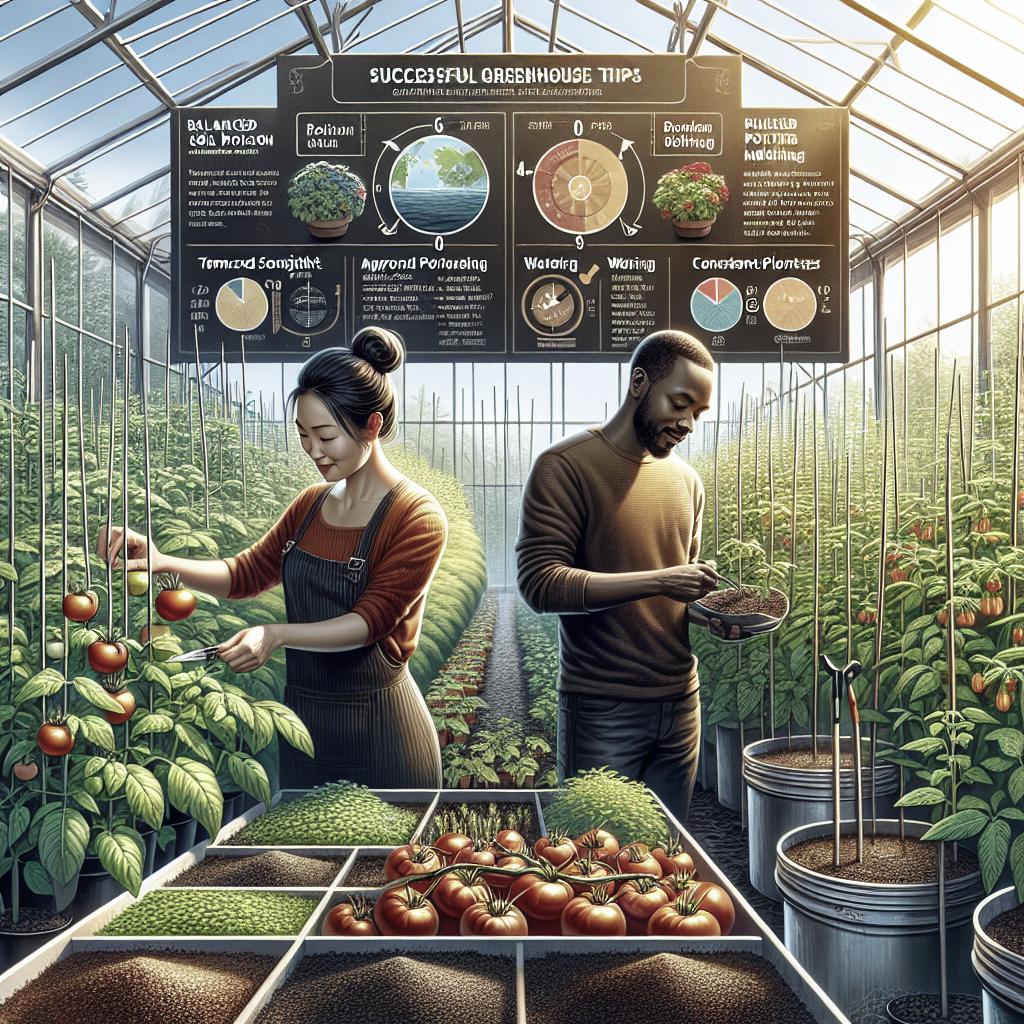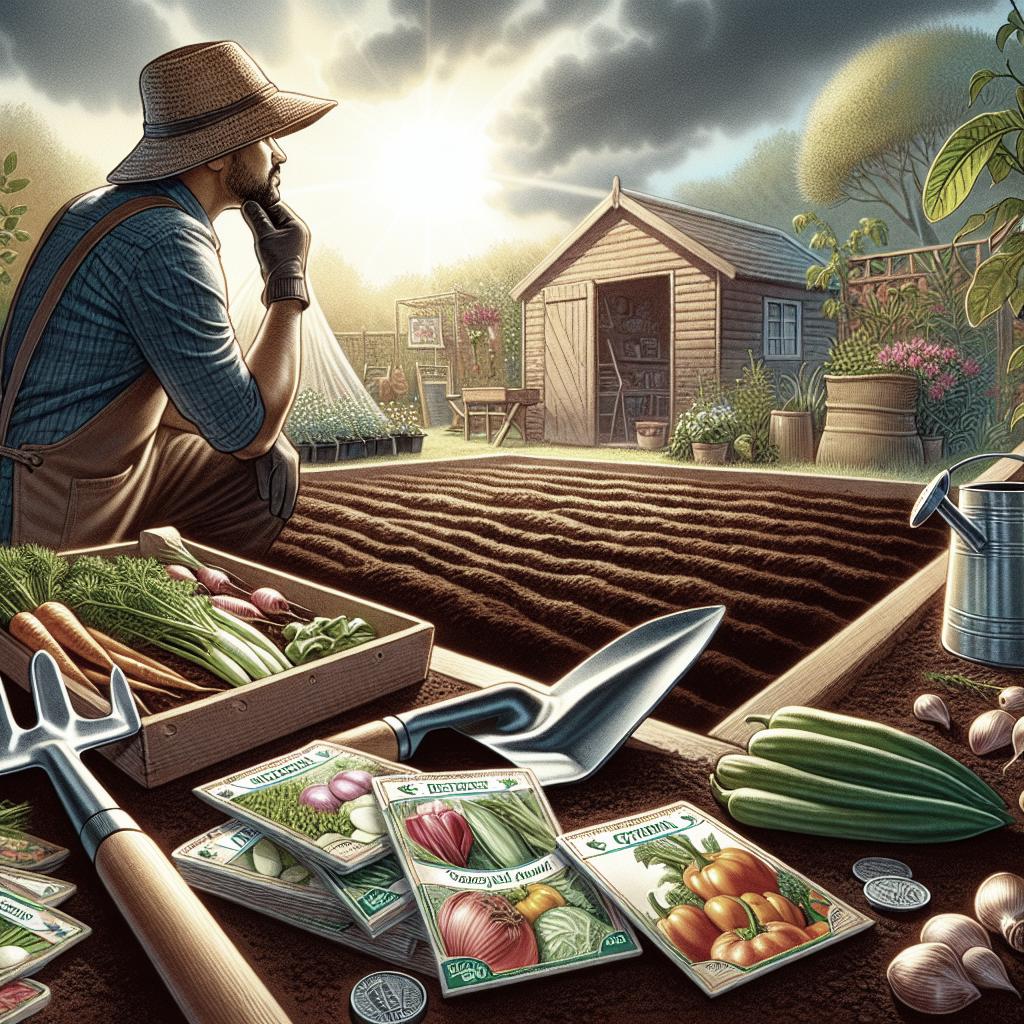“`html
Successful Greenhouse Gardening Tips
Greenhouse gardening can be an incredibly rewarding endeavor, allowing gardeners to extend their growing season and cultivate a variety of plants that may not thrive in their local environment. This blog post provides a comprehensive guide to successful greenhouse gardening, focusing on strategic planning and personalized choices. From selecting the right crops and optimizing space to balancing temperature requirements and experimenting with planting strategies, these tips aim to make your greenhouse garden more productive and enjoyable. Whether you’re a seasoned gardener or a beginner, these insights will help you maximize the potential of your greenhouse to produce abundant results year-round.
Greenhouse Growing is Planning for the Future
Successful greenhouse gardening begins long before you start planting seeds. It requires thoughtful planning and consideration of future conditions. By visualizing your greenhouse’s potential throughout the seasons, you can anticipate challenges such as temperature fluctuations, pest management, and space constraints. Strategic planning enables you to prepare for these issues before they become problematic, allowing your garden to thrive efficiently.
Consider your long-term goals when planning your greenhouse garden. Do you wish to grow vegetables to supplement your family’s diet, or are you more interested in cultivating ornamental plants? Your goals will influence every aspect of your greenhouse management, from the plant varieties you choose to the structures and systems you implement. Think about how your greenhouse garden can evolve over time, increasing productivity and sustainability. By aligning your immediate actions with your vision for the future, you create a roadmap for lasting success.
So Here is My Five-Step Plan for More Sensible Greenhouse Growing This Year:
1. Grow What You Love
Gardening should be an enjoyable and fulfilling activity. One of the most important aspects of greenhouse gardening is selecting crops that you truly enjoy. While it might be tempting to follow trends or grow plants solely based on their market value, it’s crucial to prioritize your own tastes and preferences. Growing plants that you’re passionate about will not only keep you motivated but also enhance your overall gardening experience.
When choosing what to grow, consider both your culinary preferences and aesthetic desires. Perhaps you’re a fan of Italian cuisine, in which case growing tomatoes, basil, and peppers would be highly rewarding. Alternatively, if you enjoy fresh salads, consider planting a mix of leafy greens, cucumbers, and herbs. By focusing on what you love, you’ll enjoy the creative process, and your enthusiasm will reflect in the thriving health of your garden. Moreover, your success will inspire others and may even encourage them to start their own greenhouse projects.
2. Measure First – Then Order Your Seeds
One common mistake in greenhouse gardening is ordering seeds before considering the available space. Before you purchase any seeds, carefully measure your greenhouse and create a detailed planting plan. Take into account the mature size of each plant, their growing habits, and the available light and temperature conditions. This careful planning will help you make the most efficient use of your space and resources.
Once you have an accurate layout, match the dimensions with your desired crops. By strategically planning your planting arrangement, you can avoid overcrowding, ensure proper air circulation, and enhance growth productivity. This foresight not only economizes on resources but also boosts crop yield. With a well-thought-out plan, you can shop with confidence, knowing exactly what quantities of seeds you need. Plus, planned planting prevents impulse buys, which often lead to unnecessary waste and clutter.
3. Reminder: There is More Than One Way to Use Your Greenhouse
Your greenhouse can serve multiple purposes, from seed propagation to providing a sanctuary for tropical plants. Embrace versatility, and tailor the uses of your greenhouse to meet your personal goals and environmental conditions. Consider dividing your space into zones dedicated to different functions such as germination, growing on, and hardening off, this targeted use of space enhances productivity and utility.
Experiment with various growing methods, such as aquaponics, hydroponics, and vertical farming, to find the best fit for your needs. These methods can increase yield and efficiency while offering novel ways to engage with your plants. Think outside the box and explore non-traditional uses for your greenhouse. By leveraging the versatility of your space, you can maximize its potential and discover new ways to enjoy gardening year-round.
4. Cater to the Heat Lovers but Work Around the Cool Crops
Your greenhouse offers a controlled environment that can cater to plants with various temperature requirements. Heat-loving crops like tomatoes, cucumbers, and peppers flourish in the warm, stable conditions that a greenhouse provides. Optimize your greenhouse to maximize these conditions by utilizing passive heating techniques such as thermal mass, and ensure adequate ventilation and shading as needed.
Simultaneously, don’t neglect the potential of cool-weather crops. Lettuce, spinach, and radishes can thrive in cooler sections of the greenhouse or during periods when outside temperatures drop. By strategically rotating crops and tailoring the environment within different zones of the greenhouse, you achieve a balanced ecosystem that maximizes production year-round. Consider succession planting to seamlessly transition between seasons, which ensures constant harvests and keeps your greenhouse productive at all times.
5. Scatter Plant the Quick Crops
One of the exciting advantages of greenhouse gardening is the ability to quickly grow crops with short harvest cycles. Fast-growing plants such as certain herbs, baby greens, and radishes can often be “scatter planted” or sown in small amounts in the gaps between your other plants. This technique efficiently utilizes space that might otherwise be wasted while providing frequent and fresh harvests.
Intercropping fast-maturing plants allows you to make the most of your greenhouse space and can also act as a living mulch, reducing weed growth and maintaining soil moisture. As you harvest these quick crops, you free up space for subsequent plantings. This continuous cycle of planting and harvesting keeps your garden dynamic and productive. Through staggering and rotating these crops, you ensure a diverse output and make the most of your greenhouse’s potential.
Summary of Main Points
| Step | Details |
|---|---|
| Grow What You Love | Select crops based on personal enjoyment to enrich gardening experience. |
| Measure First – Then Order Your Seeds | Plan space efficiently to match desired crops and maximize yield. |
| Reminder: There is More Than One Way to Use Your Greenhouse | Explore versatile uses and varied growing methods for greater productivity. |
| Cater to the Heat Lovers but Work Around the Cool Crops | Manage environment to suit different plant needs for year-round growing. |
| Scatter Plant the Quick Crops | Maximize space and yield with fast-maturing, intercropped plants. |
“` This HTML document is structured with detailed tips for successful greenhouse gardening, including specific strategies and a summary table for quick reference.

